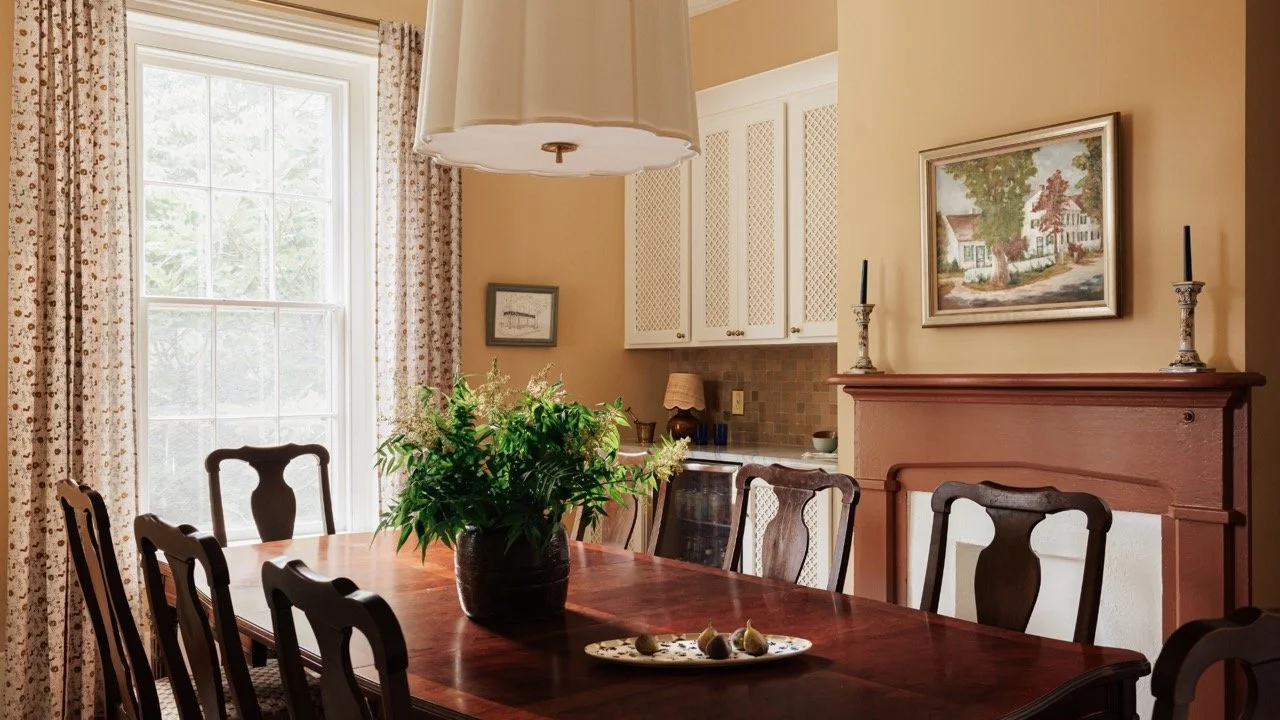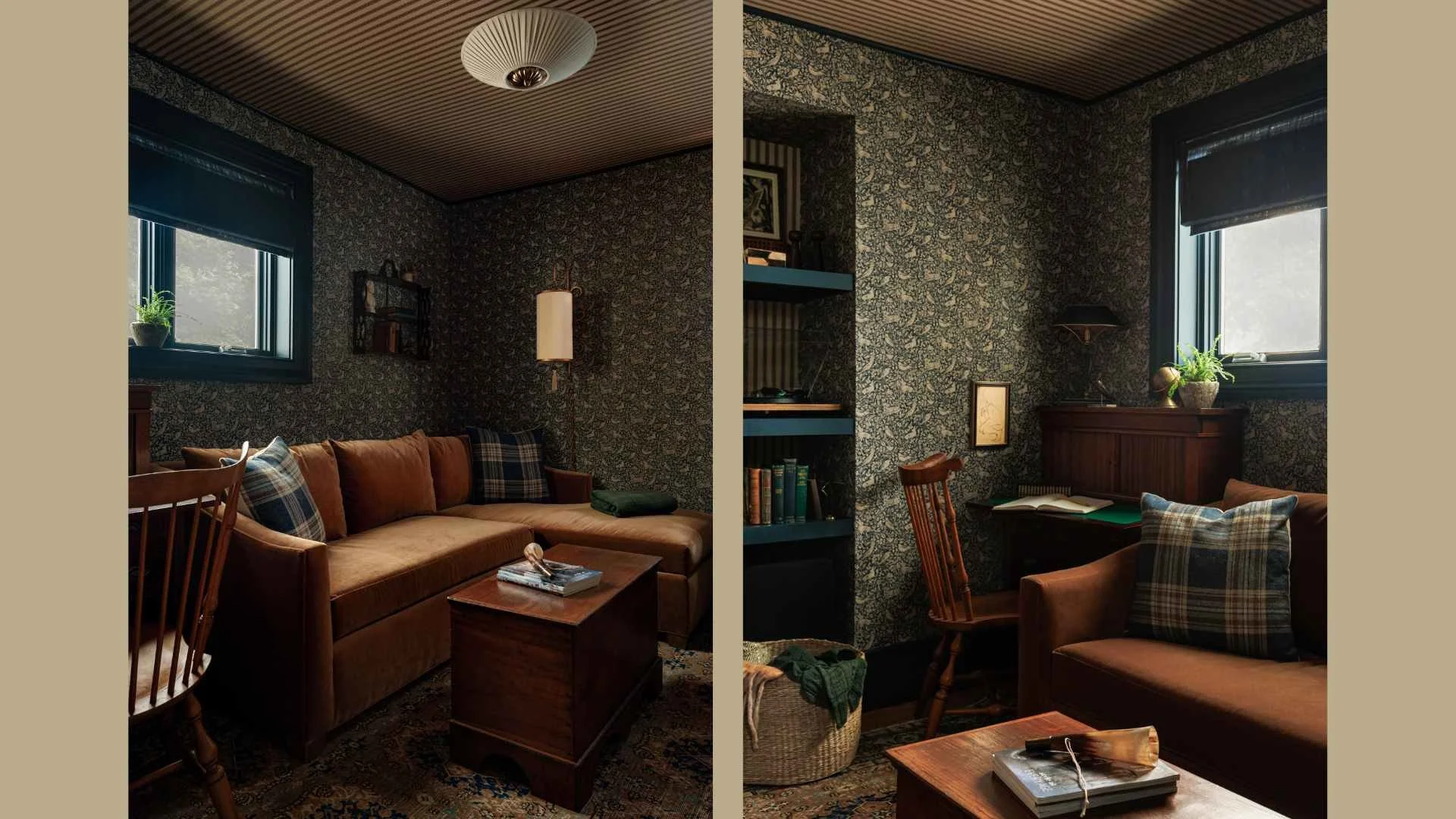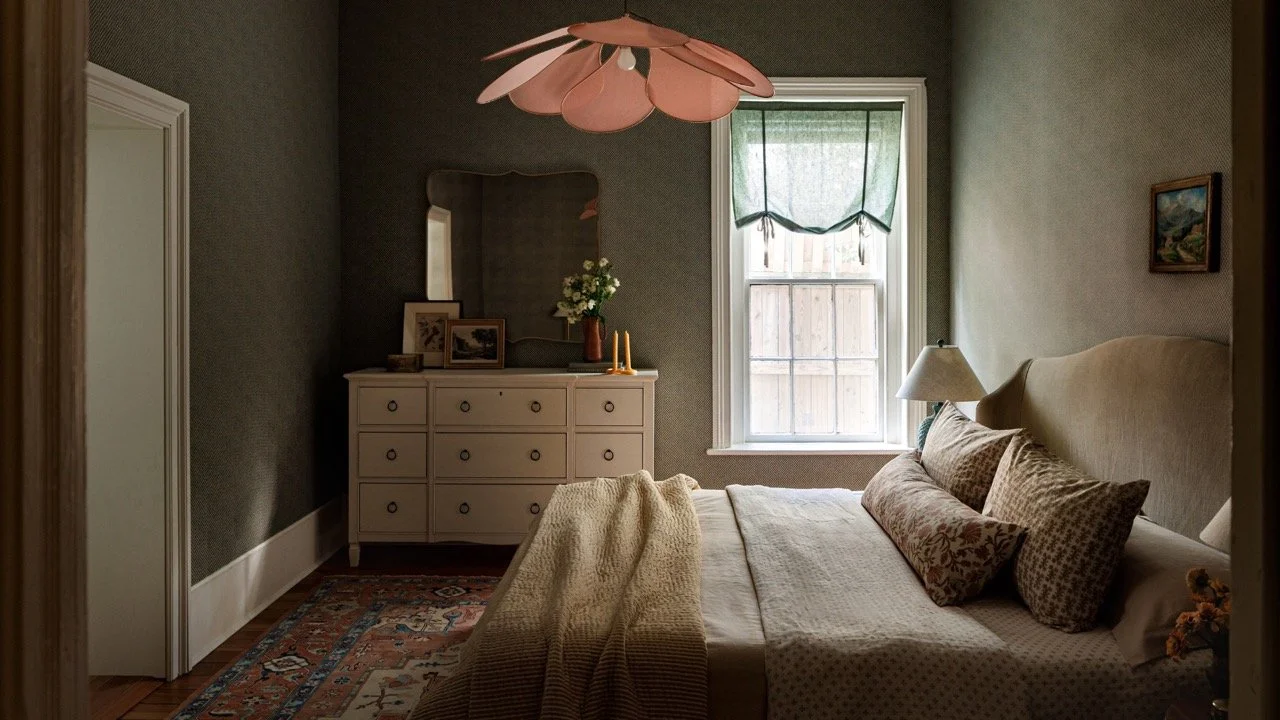Before and After: A Historic Raleigh Home Gets a Layered, Collected Update
In Raleigh’s historic Oakwood neighborhood, century-old homes have a distinct character that deserves honoring— even as they evolve with the people who live in them. When a young couple approached us about their house here, they had a clear vision inspired by their travels: Scandinavian simplicity, rustic Italian textures, and the concept of the "snug room," a cozy, private corner they'd discovered in Europe and desperately wanted to recreate just off their primary bedroom. They wanted warmth, story, and soul woven into every room.
They also had something many clients don’t: a collection of vintage furniture passed down from their grandparents, plus pieces they’d gathered over the years. Our job was to figure out how to make those heirlooms feel intentional alongside new custom work, plus how to bring in the moody, cozy aesthetic they had fallen for abroad.
This project became a study in balancing personal history with fresh design choices. It’s one we’re particularly proud of, and it’s featured on the cover of the community’s local favorite, Walter Magazine.
The Entryway: Setting the Tone
We typically start pattern selection with upholstery fabrics for larger pieces, but in this case, we chose the entryway wallpaper first. It was a bold, botanical print with a layered pattern that framed the front hall and established the color palette for the rest of the house. That single choice became our visual anchor, allowing us to connect every room while still giving each space its own personality.
The botanical wallpaper became our design foundation — its layered pattern set the color palette for the entire home.
The clients wanted an eclectic, collected look—something that felt cozy and lived-in, honored the home's rich history. From the entryway wallpaper, we layered in complementary patterns throughout, featuring larger motifs balanced with small-scale geometrics and rich textures softened by delicate weaves. The key is intentionality: each pattern should reference something else in the home, whether that's a color, scale, or texture.
Design takeaway: When mixing patterns, pick one anchor piece (a bold wallpaper, a striking rug, a statement fabric) and let everything else respond to it. Don't try to layer patterns all at once—build gradually and let each choice inform the next.
The Dining Room: Honoring the Past
Family furniture can be tricky. Clients often feel obligated to keep pieces that don't actually work in their homes, or they're unsure how to modernize something sentimental without losing its meaning.
The clients wanted their family's vintage furniture to play a central role, and the dining room became the heart of that vision. The inherited dining table had beautiful bones. We kept it, and worked with a local upholsterer to reupholster the chairs in fresh fabric that tied into our palette.
The inherited dining table anchors this warm space, creating a meaningful foundation for family gatherings.
This room set the stage for how we'd handle heirlooms throughout the house: evaluate each piece honestly, invest in updating what works, and let go of what doesn't. Not every family piece deserves a place in your home, but the ones that do deserve to be treated well.
Design takeaway: Not every family piece deserves a place in your home. Evaluate whether an heirloom has good bones and fits your lifestyle—if it does, invest in updating it properly. If it doesn't, let it go without guilt.
Living Room: Layering Old and New
We continued reimagining the family's heirlooms in the living room. A pair of yellow chairs got reworked with new butter-colored fabric, fringe detail, and swivel bases for modern functionality. A spindle-back chair was refinished with plaid wool cushions. We ordered solid drapes to size and had them finished with trim by a local drapery specialist for a tailored look. We sourced a vintage iron bench and fitted it with a new cushion.
Family heirloom chairs got new life with custom butter-yellow upholstery and swivel bases.
But the living room also presented one of the project's biggest challenges: it lacked architectural depth. No interesting millwork, no visual rhythm. Ideally, we would have added custom plasterwork or detailed trim, but the budget didn't allow for it.
Instead, we worked with a local muralist, Made You Look Murals, to design hand-painted wall details that mimicked the effect of architectural molding. The result added texture, rhythm, and personality without the cost of construction. It's a creative solution that delivered the impact we needed while keeping the project on budget.
Hand-painted wall details by Made You Look Murals add architectural weight without the cost of custom millwork.
In our design process, we’re always open to finding creative and inventive ways to help clients achieve their design goals. We’re mindful of balancing vision with practicality, assessing when it’s worth investing in custom pieces and when a clever, unexpected approach can have just as powerful an impact on your interior design transformation.
Design takeaway: When budget constraints limit your options, look for creative alternatives that deliver a similar effect. Sometimes an unexpected approach (like painted details instead of millwork) can be just as impactful.
The Snug Room: Creating a Cozy Retreat
The snug became one of the most magical parts of this project. If you're unfamiliar, a snug is essentially a cocooned retreat—small, moody, and meant for reading, listening to music, or having a nightcap. It's intentionally not a room for entertaining.
“They were introduced to the idea of a snug, which is the epitome of everything I love about design. The goal is to feel totally cocooned in a mood.” Veranda
This European-inspired snug features custom built-ins and deep navy paint for that cocooned feeling the homeowners craved.
We wrapped the room in a deep, inky blue wallpaper that immediately shifts the mood when you walk in. The mustard sofa anchors the space, and we layered in textured fabrics and patterns that add depth without overwhelming the room. Lighting became critical here: soft lampshades, directional sconces, fabrics that glow. Everything works together to create that "hug" feeling they wanted.
“The point of a snug is to be a small, cozy space that feels like a hug when you walk in…You can use both light and texture to set the mood.” Veranda
One unexpected moment of charm comes from the shelving nook, where we repeated the ceiling wallpaper on the back panel. Combined with the mix of two complementary wallpapers, it adds warmth, texture, and visual depth that make the room feel extra cozy. When you're designing a space meant for retreat, every element should support that intention.
Design takeaway: Use color, lighting, and texture together to shift a room's atmosphere. A moody paint color alone won't create coziness. You need soft, layered lighting and tactile fabrics to complete the effect.
Oakwood and Beyond: Raleigh Interior Design With Character & Care
The primary bedroom balances moody paint with warm textiles and vintage finds for a collected aesthetic.
This Oakwood home captures what we love most about design: honoring history, layering textures and patterns with intention, and weaving personal stories into every room. It's proof that thoughtful design isn't about perfection—it's about creating spaces that feel authentic, lived-in, and deeply personal.
Behind this transformation was a team of skilled local craftspeople who brought custom details to life: a Raleigh upholsterer who reimagined vintage chairs, drapery specialists who added handcrafted trim to panels, cabinetry makers who built custom shelving, and Made You Look Murals who hand-painted architectural details in the living room. We're deeply invested in supporting local makers—not just because it keeps craft alive, but because it allows for the kind of collaboration and customization that makes each project unique.
Whether we’re working on a historic renovation or a modern new build in the Triangle, our goal remains the same: to create homes that feel lived-in, and uniquely yours. If you're ready for your own transformation, Jo Lyle & Co. is here to help.
Ready to start your own project? Contact Jo Lyle & Co. to discuss how we can bring creativity, care, and vision to your home.







